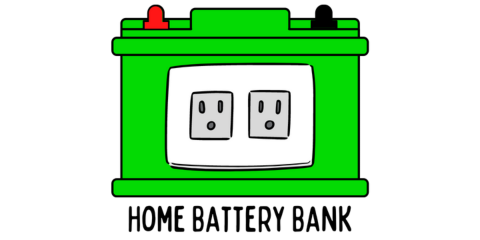When I started storing gasoline in the commonly found 5-gallon red containers, I knew that I had to add fuel stabilizers for storage but I never thought about the containers expanding and shrinking like they did as the seasons changed.
The first time I saw one of my gasoline containers bulging out in 90-degree weather, I was a little nervous to do anything with it. It looked like a gentle touch would cause it to burst!
This put me on a quest to find some answers, and I’ll be happy to share what I’ve found out.
As a general rule, a properly sealed gasoline can produced since 2009 will expand in hot temperatures and shrink in cold temperatures due to the molecules in the gasoline vapors reacting to temperature changes. This is completely normal and they are designed to handle these stresses.
Just because it’s normal doesn’t mean we have to live with it, right?
Well, while I share the sentiment of most that these new gasoline containers are worthless at pouring gasoline into anything without major spillage, there’s also some benefit to them and a few considerations to make before you do any modifications to them with aftermarket accessories.
Let’s jump into it!
It is Normal for a Plastic Gasoline Container to Expand and Shrink
It is completely normal for your gasoline container to swell up or shrink in hot or cold temperatures in a gas can produced since 2009. Current EPA guidelines require that gasoline cans only be permitted to vent out no more than 0.3 grams per gallon per day of hydrocarbon emissions.
The cause of the swelling or shrinking of your gasoline container is not due to the liquid, but rather, the vapors inside the can.
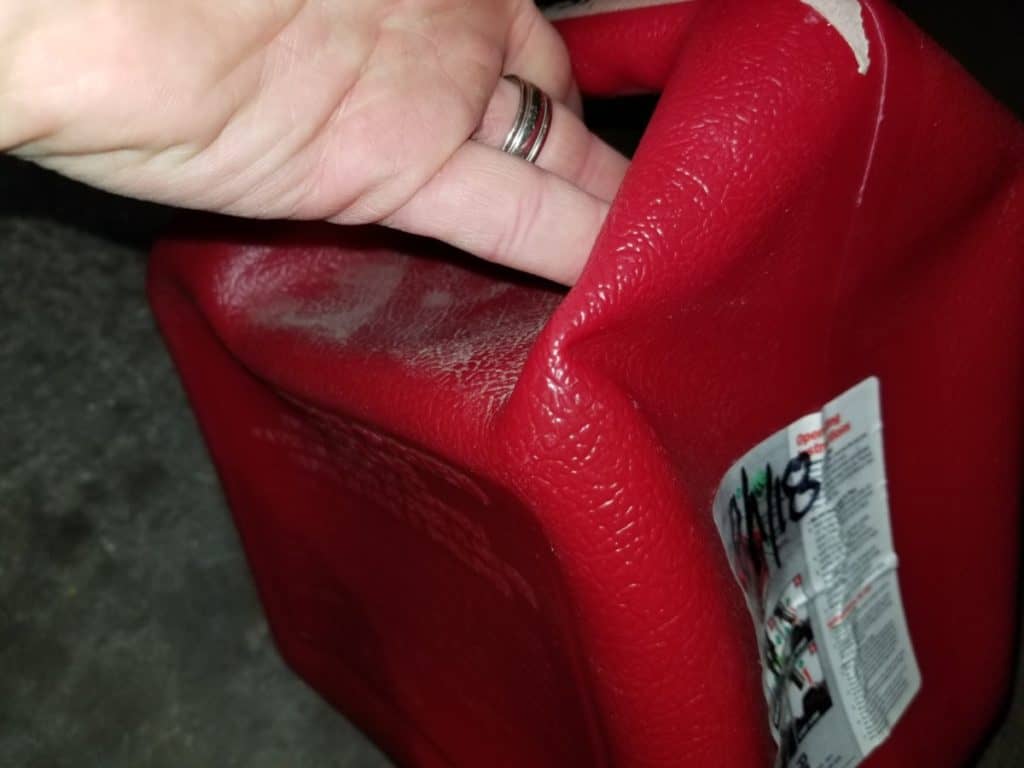
The more room you leave for air in the gasoline container, the greater your gasoline container will swell or shrink depending on the temperature.
Keeping your liquid gasoline at the max fill line will greatly mitigate the issue of having your container shrink or expand with temperature changes.
Not only is it normal for these newer cans to shrink and expand (which proves that you have an air-tight seal), this is also safe for the containers to do this. They are specifically designed and manufactured to tolerate such stresses.
Failure to create gasoline containers that can withstand such temperature swings without breaking their seal will result in heavy fines and the loss of the permits and certifications to manufacture gas cans.
Is my Collapsed Gasoline Container Ruined? How do I get it back to its Original Shape?
This is a very simple process and it just involves the sun. Simply take your gas cap off to balance the pressures on the inside and the outside of the can.
Then, seal it up again properly. Place the gasoline container in the sun on a warm day (or place on something black if the ambient temperature is cooler). The vapors inside the container will increase in volume and pressure and if a proper seal has been made, the result will be the expansion of the container walls to accommodate the gasoline vapors.
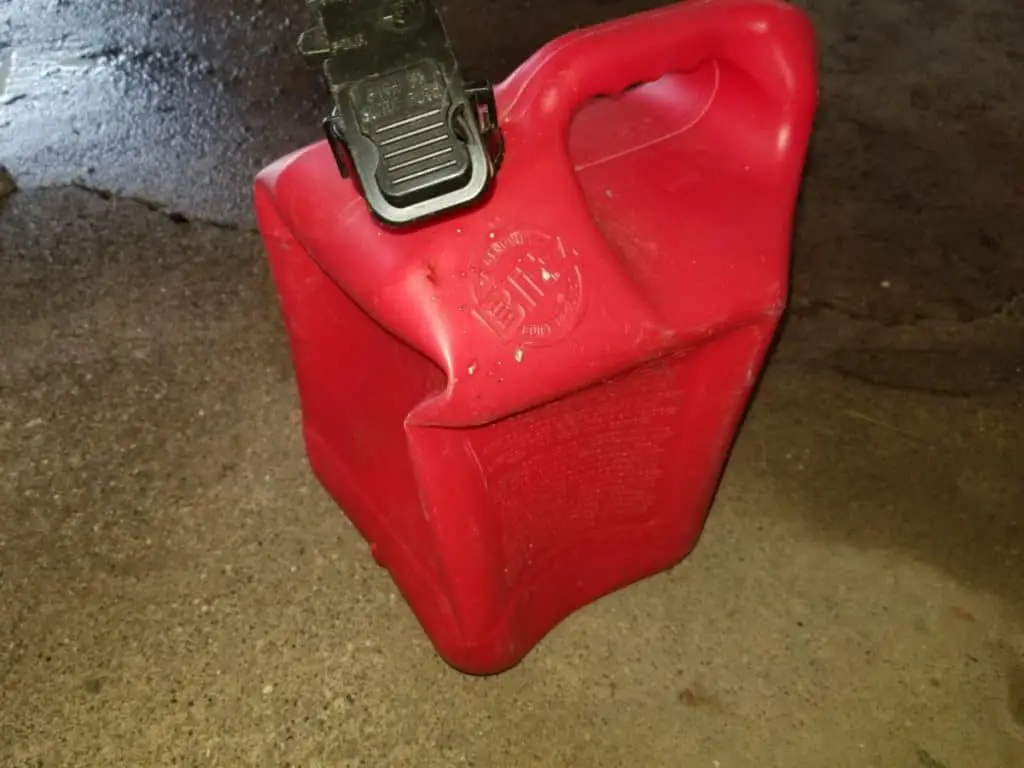
It is Safe to Pour from a Gasoline Container when it is Swollen
It is perfectly safe to pour from a gasoline container that has expanded, but you need to keep in mind that it’s under pressure.
If you do whatever method your gas can requires to vent itself, it will spray out a gasoline mist and vapor at the same pressure that’s inside the can. This can sometimes spray 10′, so make sure you do it outside and pointed in a safe direction!
You don’t have to vent the gasoline can prior to pouring. You can simply tip it over to pour, and start pouring. The vapors won’t even escape at that point since when you turn the can upside down they will now be on the bottom (now the top) of the can and only liquid will pour out.
Do use caution when refilling any engine that has been running and is hot. It is best to let a generator, or other engine, cool off for 5 to 10 minutes prior to pouring to avoid spontaneous combustion.
Why are New Gasoline Containers Sealed?
If you think back to when you were a kid, you probably never remember seeing gas cans that were seemingly swollen to twice their normal size. This is because prior to 2009 the strict regulations that were enacted by the EPA, CARB regulations were not in place to keep gasoline containers nearly perfectly sealed when not in use.
Gas cans prior to 2009 typically had a flexible spout that was sealed only with a simple cap that you placed on the end, and behind the handle was a small pull-tab vent that allowed the gasoline to flow properly when pouring.
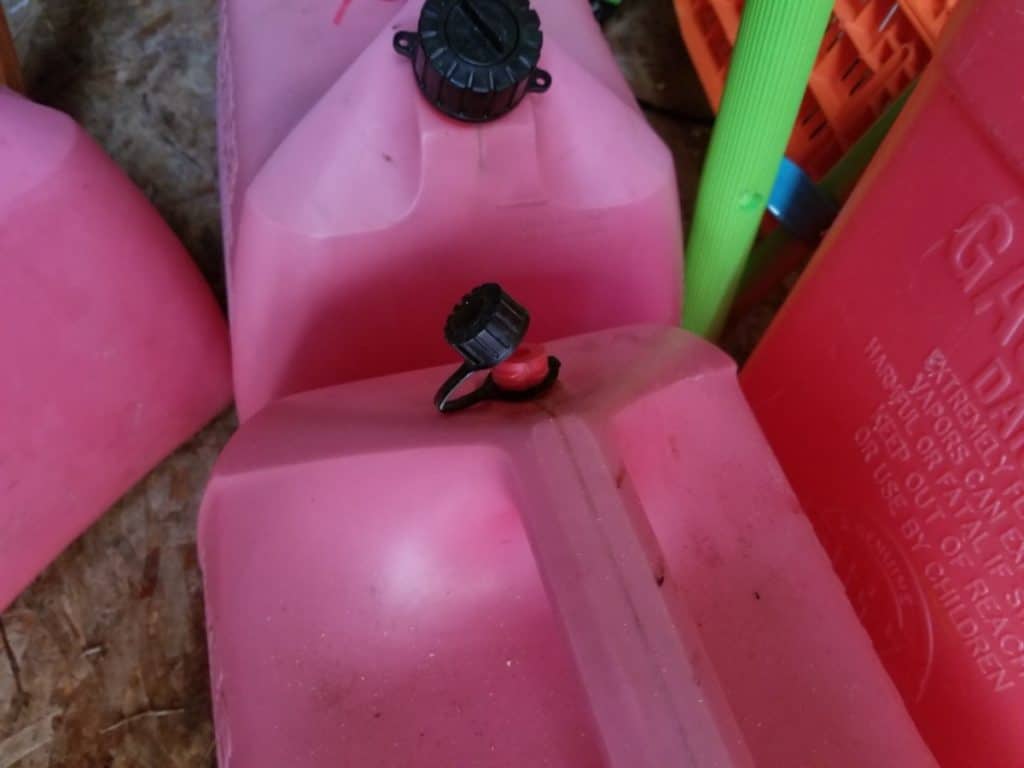
You probably do have memories of opening a shed or walking in someone’s garage and having it smell like a gas station. This is because the older cans were not even remotely close to being “sealed” even when the cap and vent were closed. In fact, most people probably left the vent open for the gas to “breathe” and for vapors to not build up.
The EPA, CARB, and CPSC stepped in for two primary reasons. The primary ones include:
- To keep the liquid gasoline from spilling and to keep vapors (volatile organic compounds – VOC) from contaminating the atmosphere
- To prevent children from abusing gas cans
You can check out their meeting notes here that discuss these reasons.
Are the New Gas Cans Better than the Old Ones?
This topic can elicit some emotional responses and pirate language from many people who have found themselves beyond frustrated with the new gas cans.
If you have tried to pour gasoline from these containers you know that the spouts are extremely finicky and you’ve likely spilled more gasoline filling your generator than you’ve ever saved by having them sealed up to EPA regulations. Even if you got the gasoline pouring correctly, you’ve generally got to use one arm to support the container and the other to manipulate the nozzle. With the weight of the can resting on the spout it is common to have your hand press against the nozzle and cause gasoline to run down your hand from the collar from causing a gap in the seal.
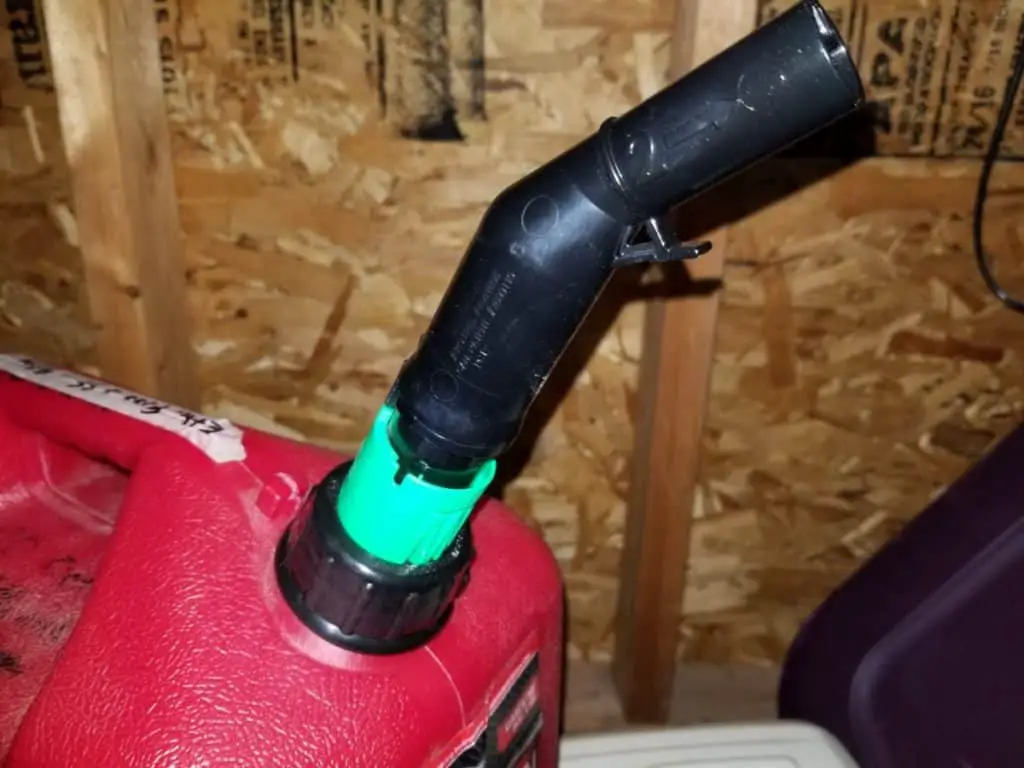
The old gas cans take the crown when it comes to ease of use and reducing spills as well as the time it takes to empty those 5 gallons of gas into a vehicle. The old cans could pour 5 gallons in a minute or two. The new ones take 10 minutes and a very well orchestrated balancing act to keep the container from self-sealing while you’re trying to pour it.
Beyond that though, the new cans have a few things going for them – especially if you’re a prepper.
Extended Shelf Life:
The new gas cans are virtually airtight, and exposure to air and oxygen is the number one culprit for causing stored gasoline to degrade. You can store treated gasoline (and arguably untreated) for years in a perfectly sealed container without a noticeable loss in performance.
I’ve got a 5 gallon container of 2-year old gas that I treated with sea-foam upon purchase and it runs fine in my lawn mower and generator. I have no doubts that if I would have stored them in an old container that the gas would have been bad a year ago even if it was treated.
Safer Around Children:
They are pretty much child-proof for anyone under their teenage years. Heck, even adults are still trying to figure these things out!
Safer* to Store in a Garage (* I said “safer”, not “safe”!)
Because they are airtight they are safer to store in your garage as opposed to a detached shed or detached garage. Some people have appliances with a permanent pilot light and having an old gas can that is constantly emitting fumes would be a disaster.
I store gasoline in my garage in these new containers and I have never smelled the vapors. If I had a garden shed I would certainly use that as a storage location instead, but the far corner of the garage is all I have at the moment.
How Can I Prevent My Gasoline Container from Expanding or Shrinking?
Keeping your gasoline container filled to the max-fill line is the easiest way to prevent excessive expanding and shrinking. Remember, the vapors expand and shrink, not the liquid. If you have enough liquid in there, there won’t be enough vapor room to make a noticeable difference.
Do not exceed the max-fill line. If it’s a 5 gallon container, stop filling it at 5 gallons.
If the container is already expanding and shrinking because it has a lot of vapor room, then you can always put a permanent vent in the can itself. Some people poke a small hole with a pin or finishing nail into the container right behind the handle (where the old cans used to have their vents).
I don’t recommend venting because I want my gasoline to last for long-term storage. Venting it will ruin that.
Other people don’t tighten the collar around the nozzle all the way and only tighten it up when they are ready to use it.
Still, others keep everything sealed but relieve the high or low pressure created by the vapors whenever they see the can starting to swell or contract.
They even sell aftermarket products which effectively turn your new self-sealing gasoline containers into the old style for a more user-friendly experience and easier pouring capabilities. These are easily installed and extremely affordable. I have a link here to a highly rated set on Amazon if you’d like to see what they look like.
If you decide to update your containers they sell the kits in various quantities, but you’ll want to carefully read what is included with some of the available products. Some show the new spouts and vents, but when you read the description the vents are not included. The link above has everything included plus flame-arrestors for added safety in case someone is acting recklessly and pouring gasoline onto a fire.
Should I Vent My Gasoline Container?
First, consider where you’re storing the gasoline. If you’re storing it in an attached garage, or anywhere where there might be spark or flame — DO NOT vent your gasoline containers (either permanently with aftermarket parts, manually as you pass by them and notice them bulging, or by simply not tightening things down).
Venting your containers in this environment is a huge safety risk and can result in severe injury or death.
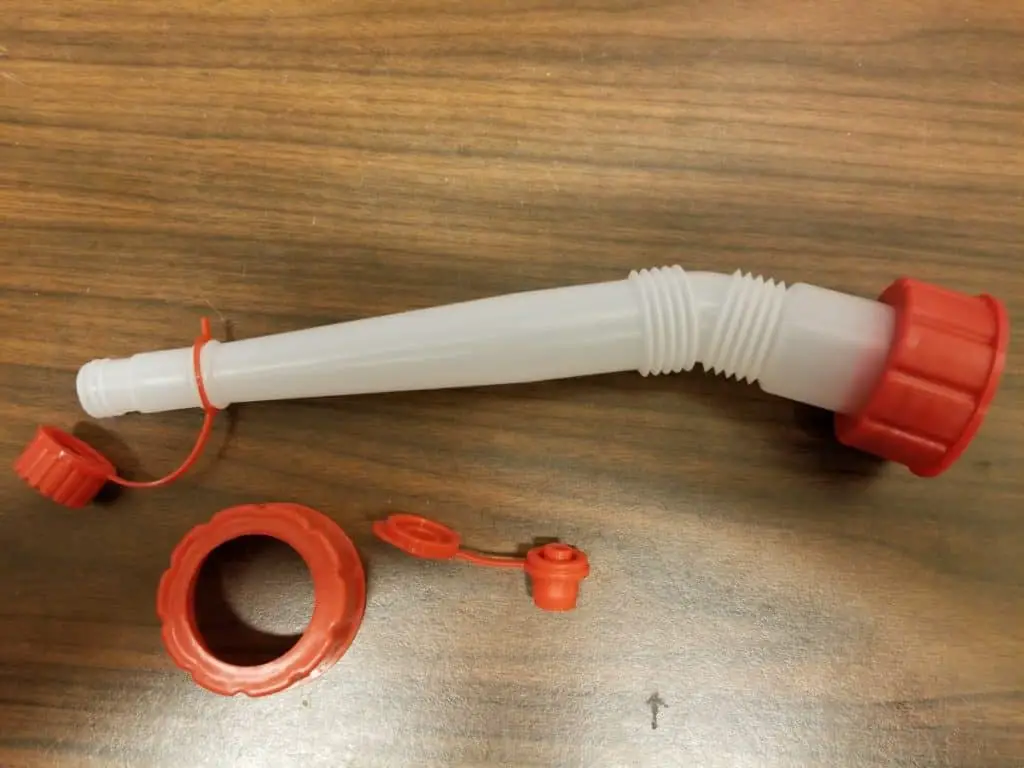
If you’re a prepper and looking to keep gasoline stored for long term use, you should not vent your gasoline containers. This releases the light-ends, which are the most combustible components of your gasoline mixture. Remember, your engine uses the vapors during the combustion process, not the liquid.
The more your gas is exposed to air, the fewer light-ends you will have and the more poorly your gasoline will perform. Exposed to air long enough, and all of the light ends will dissipate and leave you with the heavier properties which will eventually start to gum up and create a varnish. Keep your gas sealed from air if you want long-term storage!
Pro Tip: The new EPA-approved spouts are a pain to use without spilling gasoline everywhere as you pour it. A convenient way to pour your gasoline is to use a portable, battery-powered fuel transfer pump. These are inexpensive and can run on AA batteries. You could empty 5 gallons into whatever engine you needed in just over 2 minutes. Way easier on your back and you won’t be cursing the whole time as you spill gas on your shoes! I highly recommend a device like this, seen on Amazon, and use one at work all the time.
If you’re storing your gasoline in a storage shed and don’t mind it smelling like a gas station, then you can get away with venting your containers. I’m not saying to do it. I’m not saying it’s safe. I’m saying you’d simply be doing what everyone did prior to 2009.
If you plan on using your gasoline in a season or two, like for doing lawn work, then venting your gas probably won’t be an issue at all as long as it’s safely stored and treated.
If you’re looking to store the gas for a year or two and still have it function like new, make sure to use a fuel stabilizer like SeaFoam and keep it in one of the new gas containers and let it expand and shrink as needed.
